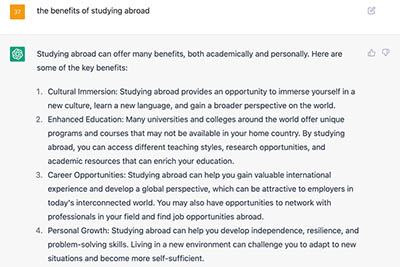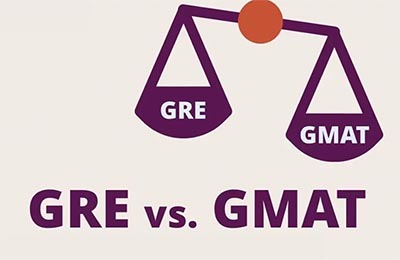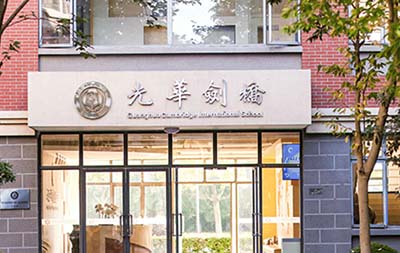雅思_托福寫作能力線上提升課
時間:2020-07-10
來源:朗思教育
作者:Eric chen
相比于詞匯和語法,內容才是一篇文章的關鍵。
就算一篇文章的句子再復雜,語法再正確,詞匯再高難,如果內容空洞無物,同樣沒有價值。
而內容的積累,特別是抽象概念的具體化,則是同學準備寫作過程中的難點所在。
本線上寫作打卡群正是為了解決這一問題而來,提供了一種有效的積累表達和思路的方法。
不管是準備參加雅思還是托福考試的同學,都可以用這種方式有效地進行素材積累。
本打卡群通過“語料積累+翻譯/總結練習”的形式為同學們提供一個積累寫作素材的機會。
語料積累部分要求同學從所給文章中至少列出10個以上可以學習的表達;翻譯部分則根據(jù)所給表達,寫出三個有一定復雜度的句子;總結練習則以文章內容為基礎,寫一個100-150字的總結段落。
通過這幾種方式,同學們能夠比較高效地積累一些思路和語料,并掌握了一種提高寫作能力的方法。
點評模板:文章
Zoos Are Not Prisons. They Improve the Lives of Animals.
The recent death of Harambe—the Western lowland gorilla shot dead at the Cincinnati Zoo after a three-year-old boy fell into his enclosure—has ignited a fierce debate about the role of modern zoos. Some critics have seized the tragedy as an opportunity to advance an uncompromising anti-captivity narrative in which all zoos and aquariums are inherently unethical and cruel.
To be sure, there are bad actors. The spawning of so-called “roadside zoos”—an exploitative enterprise known for its systematic negligence and abuse of animals—are some of the most egregious cases-in-point. But blunt and sweeping indictments of zoos and aquariums fail to account for how ethical institutions enrich and ultimately protect the lives of animals, both in human care and in the wild.
Responsible zoos and aquariums exist to facilitate and promote the conservation of animals. And the need for intensive conservation campaigns is now more urgent than ever before: Our world is currently in the midst of the “Sixth Extinction,” a term coined by Elizabeth Kolbert in her Pulitzer Prize-winning book of the same name. Unlike the five preceding die-offs, which were precipitated by natural events—such as those that killed off the dinosaurs, exterminating three-quarters of all species on the planet—the current mass extinction is a result of human activities encroaching on wild spaces.
Today's zoos and aquariums are uniquely positioned to combat those evolving threats. Using robust and sophisticated breeding programs, these institutions fund and facilitate countless initiatives to propagate species and preserve genetic biodiversity, and then reintroduce critically endangered or extinct species into the wild. Consider the Arabian Oryx, a striking breed of antelope from the Arabian Peninsula. The species was hunted to extinction in the wild nearly four decades ago, when the last wild Arabian Oryx was shot and killed in 1972. The Phoenix Zoo helped lead the ensuing breeding and reintroduction programs, which ultimately birthed more than 200 calves from just nine individuals. Now between Oman and Jordan, there are about 1,000 Arabian Oryx living in the wild.
The Arabian Oryx—which has since been removed from the endangered species list—isn’t alone. Breeding programs at zoos and aquariums have since saved numerous other species from extinction, including the European bison, the red wolf, and the Oregon spotted frog.
Even when animals are never introduced into the wild, placing them under human care can still improve the lives of their wild counterparts: modern zoos and aquariums serve as bases for observation and research, which then helps protect wild animals.
One compelling example is the study of animal infection and disease, currently the subject of numerous ongoing research projects at zoos worldwide. The Zoological Society of London, for instance, is developing innovative methods to assess the risks of animals contracting disease when they’re reintroduced into the wild. Smithsonian’s National Zoo in Washington is leading global research efforts on the detection and treatment of the sometimes-fatal elephant herpes virus, with the ultimate goal of developing an effective vaccine to be administered to the species in both zoo and wild populations. And the San Diego Zoo retains a staff of 20 experts dedicated to the study of treating wildlife diseases that threaten conservation.
Of course, the positive contributions of zoos and aquariums in conserving wild animals cannot—and should not—outweigh the health and well-being of the animals living under the care of these institutions. That’s why American Humane Association is launching a global initiative to elevate the welfare standards of zoos and aquariums worldwide. The Humane Conservation program will be the first third-party certification devoted solely to verifying that animals living in these institutions are healthy, positively social, active, safe, and living with proper light, sound, air, and heat levels. And these standards will be set not by zoos but instead an independent collection of world-renowned experts in the fields of animal science, behavior, and ethics—a sharp departure from most existing accreditation programs, which are vulnerable to accusations of conflicts of interest and leniency.
To some detractors, the humane certification of zoos and aquariums is an oxymoron. But vast empirical and academic research discredits this black-and-white view. Animals in zoos and aquariums today can live longer, healthier, and richer lives than their forbearers ever did in the wild. Go see for yourself. (709 words)
表達
1. ignite a fierce debate 引發(fā)激烈討論
2. advance a narrative 提出觀點
3. inherently unethical and cruel 本質是不道德和殘忍的
4. urgent need 緊迫的需求
5. combat threats 應對威脅
6. Arabian Oryx, a type of antelope 一種羚羊
7. counterpart 同等地位的另一方
8. serve as bases for research 作為研究的基礎
9. a compelling example 一個有趣的例子
10. develop a vaccine 研發(fā)疫苗
11. launch an initiative 提出計劃
12. oxymoron 悖論
翻譯下面句子:
動物園本身是否是不道德和殘忍的引發(fā)了激烈討論(ignite a fierce debate)
Whether zoos are inherently unethical and cruel has ignited a fierce debate.
動物園能夠有效應對由人類活動造成的物種大規(guī)模滅絕危機(combat threats)
Zoos can effectively combat threats of mass extinction caused by human activities.
盡管存在一些忽視和虐待動物的情況,但還是有人認為動物園給動物帶來的好處超過(outweigh)了壞處
Although negligence and abuse of zoo animals exist, some still believe the benefit brought by zoos to animals outweighs the drawback.
總結:How do zoos benefit animals? (100-150 words)
Zoos benefit animals in the following aspects. Responsible zoos and aquariums can facilitate and promote the conservation of animals by using robust and sophisticated breeding programs to preserve biodiversity, and these endangered species can be reintroduced into the wild. Arabian Oryx, a type of antelope, is an example of this. Even when animals are not sent back to nature, zoos still bring benefits to animals. Modern zoos and aquariums can be served as bases for observation and research, improving the life quality of their wild counterparts. Smithsonian's National Zoo in Washington, for instance, is a leading global research on detection and treatment of sometimes-fatal elephant herpes virus, with the ultimate goal of developing an effective vaccine to be administered to the species in both zoo and wild populations. (128 words)
寫作能力提升課課程時間安排(參考)

部分課堂老師

































